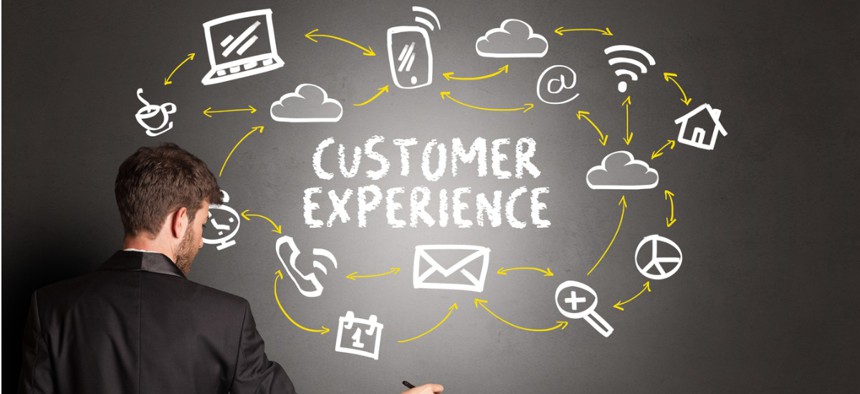Feds Offer Tips for Standing Up Customer Experience Offices

The first step is listening to stakeholders.
Due to sustained policy pushes across the Obama and Trump administrations, the business discipline of customer experience has become integral to agency operations and mission delivery.
The increased executive and legislative focus on customer experience have numerous agencies preparing to install customer experience offices—and chief customer experience heads—in hopes of improving service delivery.
Launching new offices is no easy feat in normal times and is further complicated in the remote work environments necessitated by the coronavirus pandemic. But federal officials speaking Thursday at a virtual event held by the Digital Government Institute shared tips for federal colleagues looking to stand up new customer experience shops within their agencies.
“You really need to take time to understand the culture you’re in, and understand where others are,” said Chelsea D’Angona, customer experience administrator for patents at the U.S. Patent and Trademark Office. D’Angona, who earlier in her career helped stand up a customer experience office within the Federal Emergency Management Agency, said she jumped at the chance to perform a similar feat—under a new position—at USPTO. However, agencies, just like companies, each have unique personalities and cultures, and D’Angona cautioned against employing strategies without truly understanding an agency’s culture.
“Any change management initiative like bringing in customer experience, it really is teaching people how they think and work and orient themselves to a different north star,” D’Angona said. “If you have an opportunity, sit in a contact center, absorb as much as you can.”
David Wernecke, chief experience officer at the Consumer Financial Protection Bureau, said flexibility has been key to CFPB’s customer-driven efforts. Created a decade ago to protect American consumers from shoddy business practices, Wernecke said there were “early pain points” due in part to the newness of the organization.
“I’m not sure if there is a right or wrong way to start, but flexibility, resilience and building data into your [customer experience] prioritization, and making sure you’re being driven by that data,” is key, Wernecke said.
Stephanie Bogan, chief customer experience officer at the National Archives and Records Administration, recommended agencies “start small and focused” as they implement customer experience principles. The discipline can be complex and nuanced, Bogan said, and customer experience practitioners should “skip jargon and use plain language” when possible. Bogan recommended customer experience personnel “don’t go it alone” and seek buy-in from leadership. Bogan also emphasized the importance of soliciting feedback from a variety of personnel—from frontline employees to executives—within organizations. Employee experience shouldn’t be forgotten, either.
“You can’t pour from an empty cup,” Bogan said, noting that happy employees tend to provide superior customer experience.
Eric Bruce, the National Gallery of Art’s head of visitor experience and evaluation, championed an empathetic approach to customer experience, buoyed by data and research.
“If you don’t understand your internal customers, you’re at a disadvantage,” Bruce said.
Bruce also added that it is important to begin any customer experience effort with a strong vision—and not to get discouraged.
“Start with a vision and bulldoze anyone that is in your way,” Bruce said.
NEXT STORY: Quick Hits






